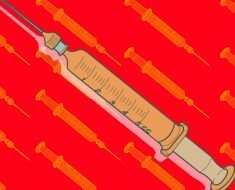A less common problem is when a person eats too much fiber too quickly, which can cause digestive problems. It is important to consume the right amount of fiber each day, spread throughout the day.
High-fiber foods are an essential part of a healthful weight loss diet, and meeting the daily recommended intake of fiber can provide many health benefits.
Read on for the official U.S. Department of Agriculture (USDA) dietary guidelines, fiber recommendations for weight loss, and tips and a meal plan to help you meet your daily recommended fiber intake.
Daily recommended fiber intake

Fiber is the carbohydrate component of plant-based foods that is not digested or absorbed as it moves through the intestine.
The optimal amount of daily fiber intake varies depending on a person’s age and sex. The current Dietary Guidelines for Americans recommend the following approximate daily intake:
- adult men require about 34 grams (g) depending on their age
- adult women require about 28 g depending on their age
Intakes of fiber are modified for certain groups as energy requirements vary at different life stages. For example, it is recommended that children consume less than adults, with the following lower and upper bounds representing females and males respectively:
- teenagers aged 14 to 18 require 25.2–30.8 g
- adolescents aged 9 to 13 require 22.4–25.2 g
- children aged 4 to 8 require 16.8–19.6 g
- children aged 1 to 3 require 14 g
Most Americans are not getting enough dietary fiber. A study in 2008 found that the average daily intake was only 16 g per day.
On the other hand, eating too much fiber can cause bloating, gas, and constipation. These adverse effects may appear after eating 70 g of fiber in a day. Excessive fiber intake is uncommon in the United States while consuming too little fiber is considered a “public health concern” by the U. S. Food & Drug Administration (FDA).
A balanced, high-fiber meal plan
As well as eating a healthful amount of fiber, it is also essential to ensure that the daily diet is balanced with a variety of nutrients and vitamins.
The following meal plan ensures that a person can hit or slightly exceed their recommended daily intake of fiber while eating balanced meals:
A person can use the USDA Food Composition Databases to find out the fiber composition of a wide variety of foods.

People who want to lose weight are often encouraged to eat fiber-rich foods because they tend to be low in calories, high in nutrients, and make a person feel full for longer. By adding bulk and slowing digestion, fiber stops a person feeling hungry and minimizes cravings, which is useful when trying to lose weight.
Estimates say that only 5 percent of Americans meet their daily fiber requirements. Eating more dietary fiber, including fruits, vegetables, whole grains, and legumes is an essential part of maintaining a healthy weight.
Research shows, however, that merely increasing fiber, mainly through eating more plant-based foods, is not enough on its own for weight loss.
When trying to lose weight, start by aiming to reach the recommended daily allowance by basing meals around fiber-rich foods and including regular exercise.
Be careful with the promise of high fiber dietary supplements promoting weight loss. There is very little evidence to support the claims.

There are two types of fiber: insoluble and soluble.
Insoluble fiber, referred to as cellulose, does not dissolve in water but increases the movement of waste products through the digestive tract, helping to prevent constipation.
Soluble fiber includes pectin and beta-glucans. It dissolves in water to form a gel in the large intestine.
Fiber-rich foods typically contain both soluble and insoluble fiber. Healthful sources of fiber include:
- oats
- bran
- fruits, such as berries, apples, prunes, and figs
- vegetables, such as broccoli, sweet potatoes, and cauliflower
- wholegrains, such as barley, quinoa, and wild rice
- whole wheat or granary bread
- nuts, including almonds, peanuts, pistachios and pecans
- seeds, including ground flaxseeds, chia, and pumpkin
- pulses like beans, lentils, and peas
- psyllium husk
Prebiotics occur naturally in foods such as leeks, asparagus, garlic, onions, wheat, oats, and soybeans.

Benefits of fiber
Fiber is an essential part of a healthful, balanced diet and has many benefits, including:
- improving digestive health
- preventing constipation
- reducing the risk of heart disease
- reducing the risk of type 2 diabetes
- reducing the risk of colon cancer
- reducing low-density lipoprotein (LDL) levels, which is “bad” cholesterol
- improving the glycemic index (GI) in individuals with diabetes
- increasing satiety or feeling fuller for longer
Fiber also contains the prebiotics fructo-oligosaccharides (FOS) and inulin. Prebiotics have a beneficial effect as they encourage the growth and action of probiotics, the beneficial bacteria that live in the gut, and the production of short-chain fatty acids (SCFA).
Summary
Fiber intake is best met through eating a range of foods as part of a healthful, balanced diet. Eating more plant-based meals, swapping to wholegrains and snacking on fruit throughout the day will help to reach the recommended daily allowance.
Those not currently eating a lot of fiber should increase the amount gradually over the course of several weeks to help keep any gas and discomfort to a minimum.
Drink plenty of water throughout the day, and always chew food slowly and thoroughly. It takes time for the gastrointestinal system and gut to adjust to changes, including an increase in fiber intake, but the ultimate changes are all for the better.
Source: Read Full Article





